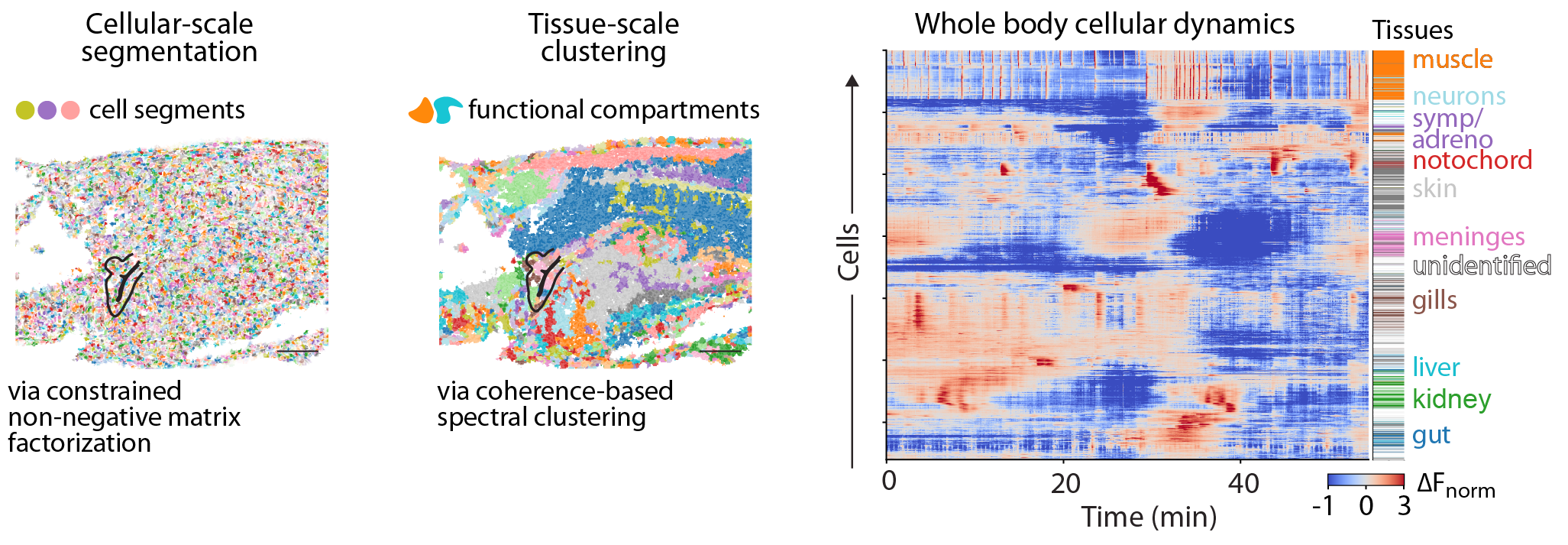Segmentation and clustering
To transform the registered, high-dimensional voxelated data into cellular-scale activity traces and relate these to organs, tissues, and cell types, we used an algorithm based on constrained non-negative matrix factorization (Voluseg)1. We tuned this approach to minimize false mergers, favoring a conservative over-parcellation of the data into subcellular segments, which can later be aggregated. While imaged volumes can be manually annotated with tissue types based solely on anatomical features, we explored whether a more data-driven methodology, centered on the aggregation of cells with related activity patterns, could more effectively dissect the data. This unsupervised strategy could, in principle, delineate function-based anatomical boundaries within and across tissues, as well as provide a dimensionally reduced representation of the data. To this end, we developed Coherence-based Spectral Clustering, a variant of spectral clustering that utilizes coherence as a similarity metric2. Coherence is a frequency-based analogue to correlation, which is invariant to phase lags and thus better groups cells engaged in spatiotemporally coupled activity (e.g., traveling waves of activity across tissues). Examining the anatomical footprint of the clusters, we found that they predominantly corresponded to sub-regions of individual tissue types, such as the kidney, gallbladder, liver, gut, and muscle. This observation indicates that cell types exhibit characteristic calcium dynamics, which can be leveraged to organize the data into interpretable and readily identifiable clusters at the tissue level, which can then be annotated with tentative tissue-type identities when discernible — we denote these Functional Tissue Compartments.

Example plane showing the weighted spatial footprints of 1) the cell segments derived from a constrained non-negative matrix factorization algorithm, 2) the functional tissue compartments derived from coherence-based spectral clustering.